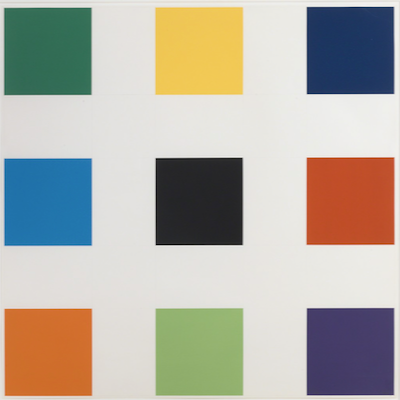
Details
Artist
Styles
Original aquatint in colors -Signed in pencil, and numbered (verso) -Edition of 50 // Out and In by Al Held, created in 1987, is a vibrant limited edition aquatint that explores spatial relationships through geometric abstraction. The composition features two panels filled with intersecting shapes, including rectangles, triangles, and circles, rendered in bold and contrasting colors. The left panel displays a complex arrangement of overlapping forms in green, yellow, red, and blue, suggesting depth and layering. In the right panel, circular red lines intersect with a central green plane, adding a dynamic sense of motion and balance. Held’s mastery in manipulating forms and perspective draws the viewer’s eye into a playful, almost architectural exploration of space, challenging perceptions of foreground and background.
Out and In, 1987
form
Medium
Size
102.9 x 133.4 cm
- Inches
- Centimeters
Edition
Price
Details
Artist
Styles
Original aquatint in colors -Signed in pencil, and numbered (verso) -Edition of 50 // Out and In by Al Held, created in 1987, is a vibrant limited edition aquatint that explores spatial relationships through geometric abstraction. The composition features two panels filled with intersecting shapes, including rectangles, triangles, and circles, rendered in bold and contrasting colors. The left panel displays a complex arrangement of overlapping forms in green, yellow, red, and blue, suggesting depth and layering. In the right panel, circular red lines intersect with a central green plane, adding a dynamic sense of motion and balance. Held’s mastery in manipulating forms and perspective draws the viewer’s eye into a playful, almost architectural exploration of space, challenging perceptions of foreground and background.
What is Hard Edge Art?
Hard Edge art is a style of abstract painting that became popular in the 1960s. It features areas of color separated by crisp, sharp edges that are painted with geometric precision. The term hard-edge painting was coined by art critic Jules Langsner to describe this approach, which contrasts with the softer, more fluid forms of other abstract styles.












